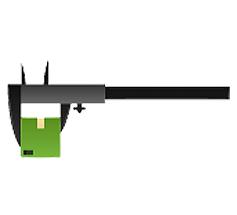7 Must Know Inventory Analysis Measures & KPI's
 Before we move into the specific details of inventory measures and metrics, let’s first become familiar with the overall concept of performance measurement and why it is so important to organizational success. Every organization conducts a variety of measurements, but what separates the successful from the not so successful approaches is the level of thought and deliberation that goes into designing and implementing the right measurements to focus on the right things.
Before we move into the specific details of inventory measures and metrics, let’s first become familiar with the overall concept of performance measurement and why it is so important to organizational success. Every organization conducts a variety of measurements, but what separates the successful from the not so successful approaches is the level of thought and deliberation that goes into designing and implementing the right measurements to focus on the right things.This is especially true when it comes to inventory systems and processes; without proper and effective inventory metrics the organization is, for practical purposes, operating blind and potentially creating negative financial consequences
Some of the benefits an organization will realize from the use of proper inventory measures and KPI’s include:
• Better oversight and management of inventory carrying costs
• More efficient processing and delivery of product
• Improved sales opportunities and delivery times for marketing and sales purposes
• Improved forecasting and management for manufacturing purposes
• Better oversight and evaluation of operating costs related to inventory
• More effective and profitable financial oversight and management
Some of the more popular inventory measures used are:
1. Inventory Turns by “ABC” inventory classification
2. Inventory Turns by categories such as; Raw Material, Work in Progress, Finished goods
3. Days Inventory Outstanding (DIO) by “ABC” inventory classification
4. Days Inventory Outstanding (DIO) by categories such as; Raw Material, Work in Progress, Finished goods
5. Slow Moving/Obsolete Stock $ Valuation
6. Gross Margin Return on Inventory Investment (GMROI)
7. DUPONT model
This is just a short list of the potential measures an organization might consider using. The specific choice of measures for every organization will depend on their goals, their needs, and their areas of focus. Selecting the right measures, then, is an important first step toward in effective use of Inventory performance measurement overall.
A few Definitions:
Firstly, Inventory Turns
Inventory Turns = annual cost of goods sold divided by the average inventory valuation over 12 months.
The cost of goods sold is the value of inventory sold (at cost, not selling price) for the period considered (12 months for our standard Inventory Turn calculation)
Many organizations use the inventory valuation at year-end but this does not represent the true average inventory over 12 months.
The average inventory = (beginning inventory+ending inventory) ?2 is also often used and even this is an approximation.
Care should always be taken when comparing your Inventory turns with other similar organizations due to the time period being taken (3mths, 12mths etc.) and the accuracy of the average inventory valuation being used.
A higher inventory turnover suggests that the company was successful in being able to quickly move the items through inventory to a sale. However, it is important to remember that the turnover depends on the niche of your company and thus, in order to understand whether you are good with inventory management or not, you should compare your results with the industry norms and your major competitors.
Secondly, Number of Days of inventory Outstanding (DIO)
Days Inventory Outstanding (DIO), basically measures how quickly inventory flows through the company from purchase to sale. It is an excellent measure of how efficiently a company is managing its inventory. In other words it shows how many days it takes to sell the entire inventory. The smaller this number is, the better.
The calculation is:
Days Inventory Outstanding (DIO)
= averageinventory ?((cost of good sold)/365)
Note: all these inventory measures can be developed using a well-designed inventory spreadsheet allowing you to:
1. Enter test data or your companies actual data
2. Select various reports with extensive filtering capability eg only analyze your “A” items
3. Automatically generate well formatted Reports
These inventory spreadsheets should be professionally designed with no extensive spreadsheet knowledge required by the user.
For additional information and an explanation of the other Inventory Measures including the ABC Inventory Classification logic visit www.inventoryskills.com
How to use your inventory measures effectively:
Using inventory measures and KPI’s effectively is your next most important step. It is not enough to just put the measures in place; the organization must also analyze the results and interpret them effectively.
This may sound easy enough, but in the real world it is not so simple or straightforward. Effective analysis makes use of data collected to either validate or invalidate the results. It is not about “running the numbers” per se, but rather about understanding the underlying data, identifying the useful information offered by this data, and then putting that useful information into action in ways that benefit the organization.
Remember with New Skills your Future Starts Now
Finally…
The technique of inventory measure has been helpful for many companies in doing the estimate of results even before implementation. Various techniques to improve your strategies are available at Inventory Skills making the individual and company perfect in running the business. In context to visit original article click here.
Comments